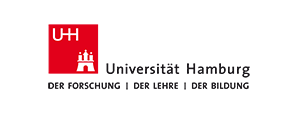Minutes of the fifth International Radiative Transfer Workshop,
July 2003
Monday
Tuesday
Wednesday
Thursday
Whole Week
Wednesday, 09-07-03
Minutes written by Claudia Emde <claudia@sat.physik.uni-bremen.de>
Carmen Verdes <cverdes@uni-bremen.de>
9:30 Welcome by Thomas
9:32 Stefan suggested to think about smaller WG
9:40 Axel v. Engeln: Intro to Radio Occultation
- Occultation of GNSS satellite
- Ducting (Radiance is reflected to Earth surface)
- Study background
- Limitations at lower altitudes
- Negative N Bias
- Setup
- Location/Altitude of Ducts
- Strength of dry ducting (without water vapor in atmosphere,
refractivity only temperature dependant)
- Altitude of ducts
- ECMWF data is useful tool for ducting studies
- Relevant ducting for RO appears mainly over sea
- Ducting events in CHAMP data in future study.
9:56 Gerhard Kopp: Potential of ground based mm-wave solar occultation
measurements
- Emission and absorption geometry
- Signature contrast of ClO
- Minimum background temperature 450K, if absorption signal is stronger
than emission signal (sun is appropriate, moon is too weak)
- Definition of relative signature contrast.
- Superiority of absorption measurements depends on elevation of the sun.
(> 20°)
- Balanced calibration
- Effect of antenna characteristics (90% coverage by sun)
- very close to ideal radiometer
- Problems
- large antenna, good pointing
- beam characteristics not well known
- Solar BT not constant
- additional baseline problems (damping element)
(DF:) similar problems with other instrument
(HB:) problems were not connected to solar occultation
- difficulties in putting up the antenna correctly
(SB:) solar spectrum signature?
- no additional lines, only flat blackbody spectrum
10:24 Sreerekha T.R.: Effect of cirrus clouds on microwave remote sensing
- Overview of projects, models (RTTOV, ARTS)
- Comparison of ARTS/RTTOV with AMSU data.
- Description of AMSU-B instrument
- Case study: AMSU-B data on 25-01-02, forecast fields from MET office
- ARTS input
- Problems when blackbody ground is assumed
- Setup of comparison
- Difference between time shifted data of 1 hour (significant)
- Difference between clear sky and cloudy fields (it's important to take
the correct time
- Effect of cloud is very small (about 1K) (200 microns particle size)
- about 6K difference for 500 microns particle size
- Emissivity issue (emissivity maps available, or different emissivity
models, e.g. FASTEM)
10:40 Coffee break
11:05 Sho: Smiles Retrieval
- Description of SMILES and ASUR instruments
- Instrument characteristics (differences and common properties)
- Retrieval of ASUR data in SMILES bands
- Simulation for AMSU and SMILES in Bands A, B, C
- Comparison of retrieval
- Large discrepancy near line center
possible reasons: frequency calibration ... probable
uncertainty in spectroscopic database ...
less probable
pressure shift of HCl ... probable
- Improvement in retrieval after including the pressure shift and
compensation of frequency calibration error (Band B)
- Retrieval in Band C works well even without corrections
(DF:) Not convinced about pressure shift
(PE:) Try to retrieved the frequency offset
11:30 Chikako: Estimation of the SMILES instrumental parameters
- Basic theory (OEM)
- Use the linear mapping for model parameters uncertainties
- Presentation of the model parameters: calibration error, sideband,
antenna, pointing knowledge, spectroscopic parameters, AOS knowledge
- Retrieval set-up
- Results: simulated measurements, retrieval results and instrumental
parameter errors (O3)
- The critical parameter is the antenna pattern
- Summary: the most critical is antenna pattern
better accuracy of spectroscopic parameters is required
11:52 Summary of working groups
- AMSU WG
- Participants: D. Pollard, H. Hauschildt, N. Courcoux, Viju Oommen
John, A. Houshangpour, C. Melsheimer, M. Kuvatov, Y. Kasai
- Different formulae to calculate Es
- Different RH
- ARTS vs. AMSU
- Problems: Deviation in Ch-18 (possibilities: cloud cases,
large viewing angle,RH is not correct)
- Validation over water
- Emissivity model (implementation)
- LWP retrieval
- Joerg: email some references (?). Look on the AQUA webside.
- Spectroscopy WG:
- Participants: C. Verdes, J. Mendrok, F. Schreier, N. Koulev,
E. Castelli, H. Berg, E. Brocard, G. Kopp, A. von Engeln, T. Kuhn
- Partition functions (TIP, new HITRAN, JPL, ATMOS)
- ATMOS: vibrational modes are included
- Database: BEAMCAT
- Line shape/Continua
- Continua implemented in MIRART
- Galatry Line shape
- Franz provides some references
Elisa: Contact J.M. Eland about intensity correction
- ARTS WG:
- Participants: C. Davis, J. Mendrok, Y. Kasai, M. Ekström, C. Emde,
O. Lemke, P. Eriksson, C. Takahashi, C. Teichmann, S. Bühler,
E. Meinköhn
- single scattering Database (current implementation in ARTS,
include temperature or refractive index)
- Monte Carlo approach to solve RTE
- Successive order of Scattering method
- Stefan: keep in mind to give some suggestions on the WG
- Lunch
Monday
Tuesday
Wednesday
Thursday
Whole Week

